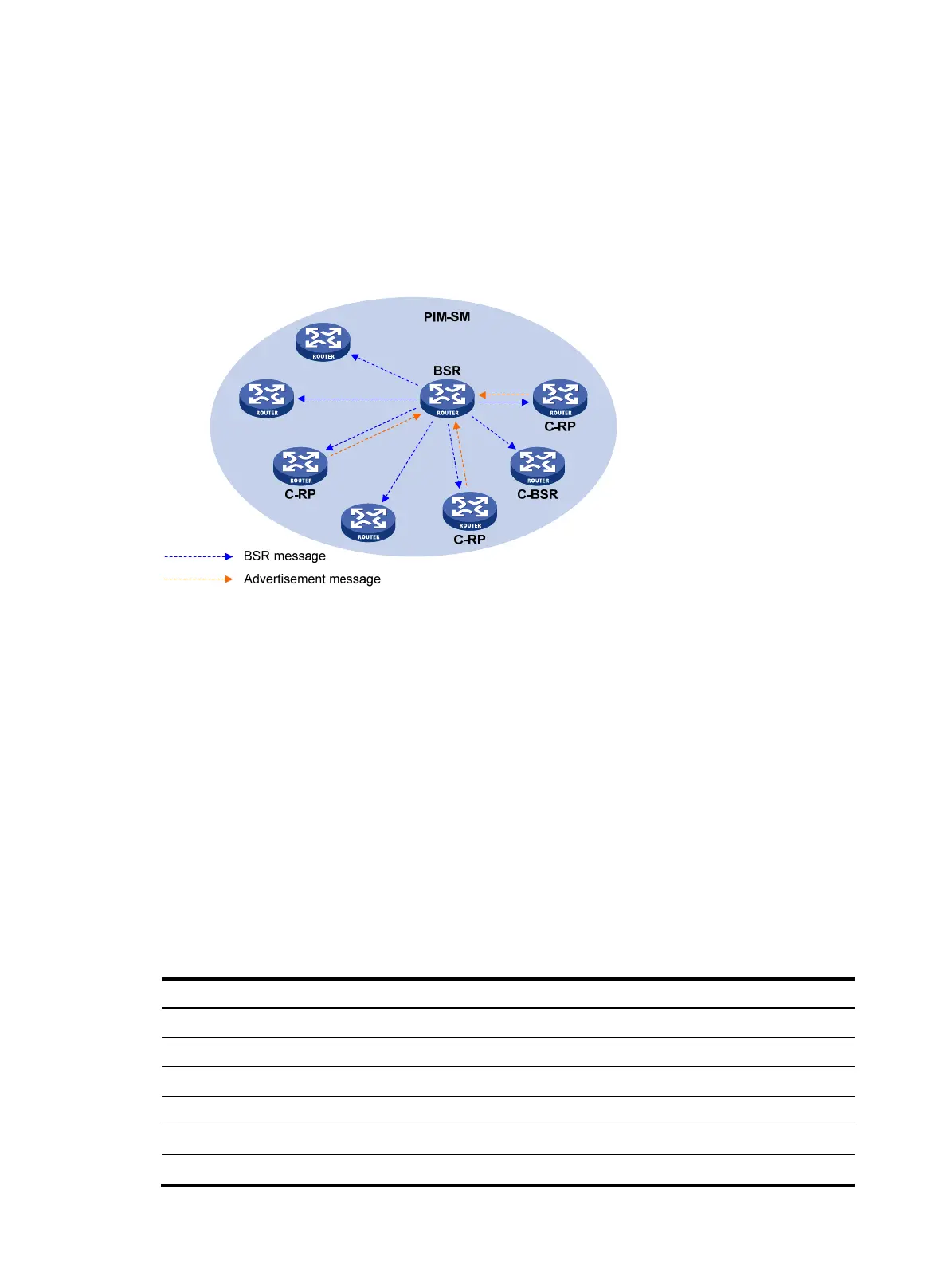137
As shown in Figure 43, each C-RP periodically unicasts its advertisement messages (C-RP-Adv messages)
to the BSR. An advertisement message contains the address of the advertising C-RP and the multicast
group range to which it is designated. The BSR collects these advertisement messages and organizes the
C-RP information into an RP-set, which is a database of mappings between multicast groups and RPs. The
BSR then encapsulates the RP-set in the bootstrap messages (BSMs) and floods the bootstrap messages
to the entire PIM-SM domain.
Figure 43 Information exchange between C-RPs and the BSR
Based on the information in the RP-sets, all routers in the network can select the proper RP for a specific
multicast group based on the following rules:
1. The C-RP that is designated to the smallest multicast group range wins.
2. If all the C-RPs are designated to the same multicast group range, the C-RP with the highest priority
wins.
3. If all the C-RPs are designated to the same multicast group range and have the same priority, the
C-RP with the largest hash value (calculated through the hashing algorithm) wins.
4. If all the C-RPs are designated to the same multicast group range and have the same priority and
hash value, the C-RP that has the highest IP address wins.
The hashing algorithm used for RP calculation is "Value (G, M, C
i
) = (1103515245 * ( (1103515245 * (G
& M) + 12345) XOR C
i
) + 12345) mod 2
31
."
Values in the hashing algorithm
Value Descri
tion
Value Hash value
G IP address of the multicast group
M Hash mask length
C
i
IP address of the C-RP
& Logical operator of "and"
XOR Logical operator of "exclusive-or"

